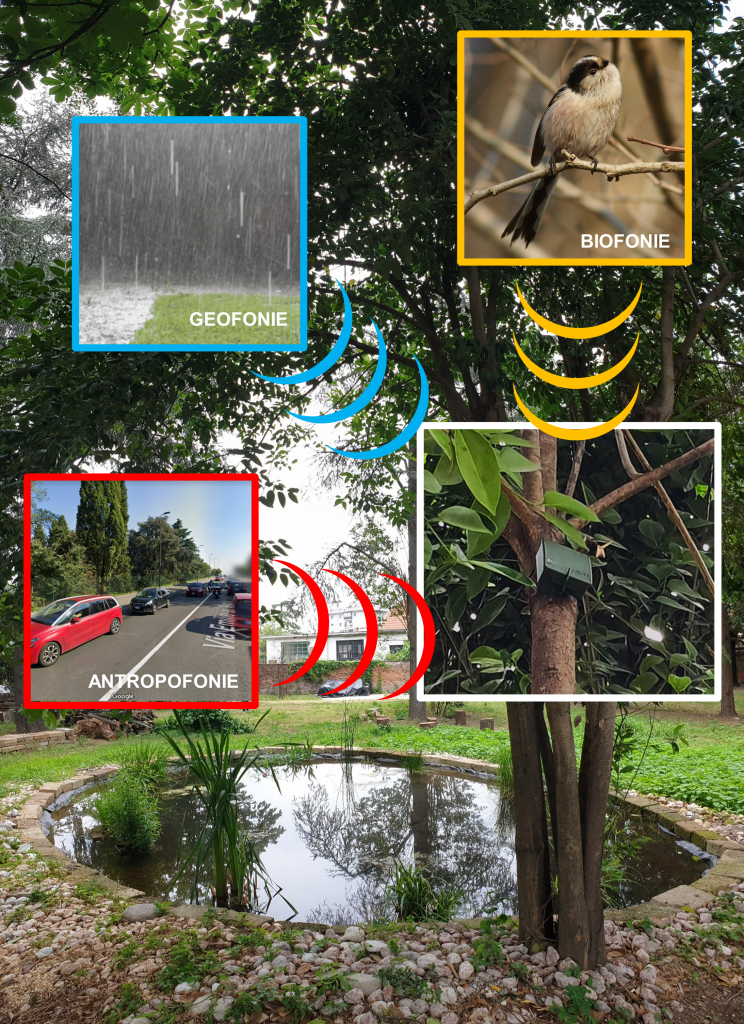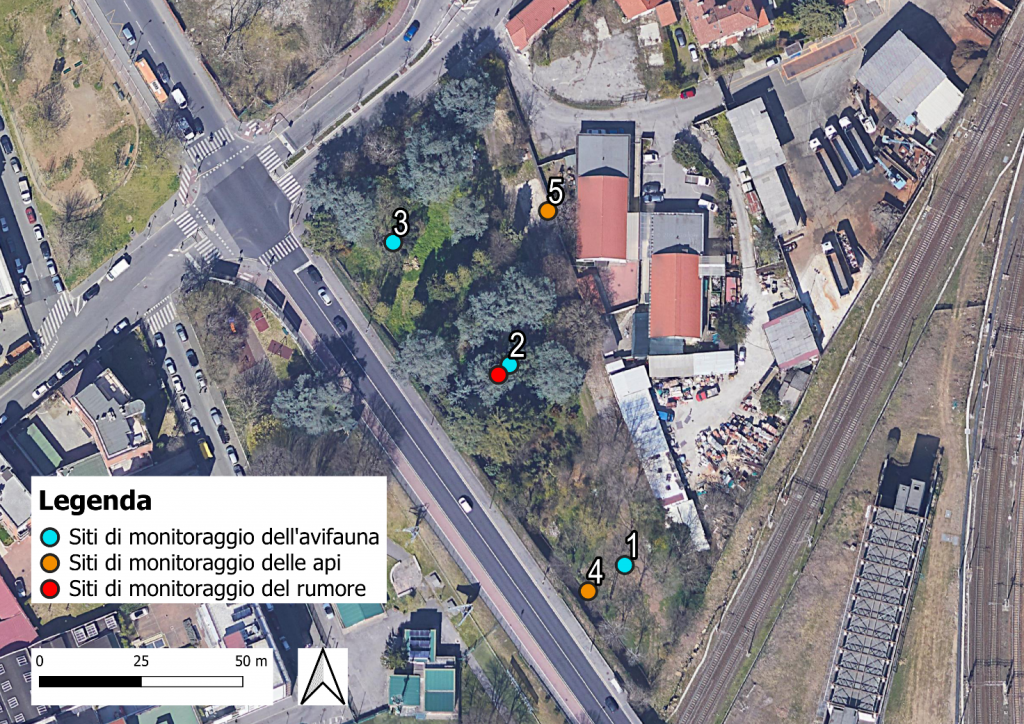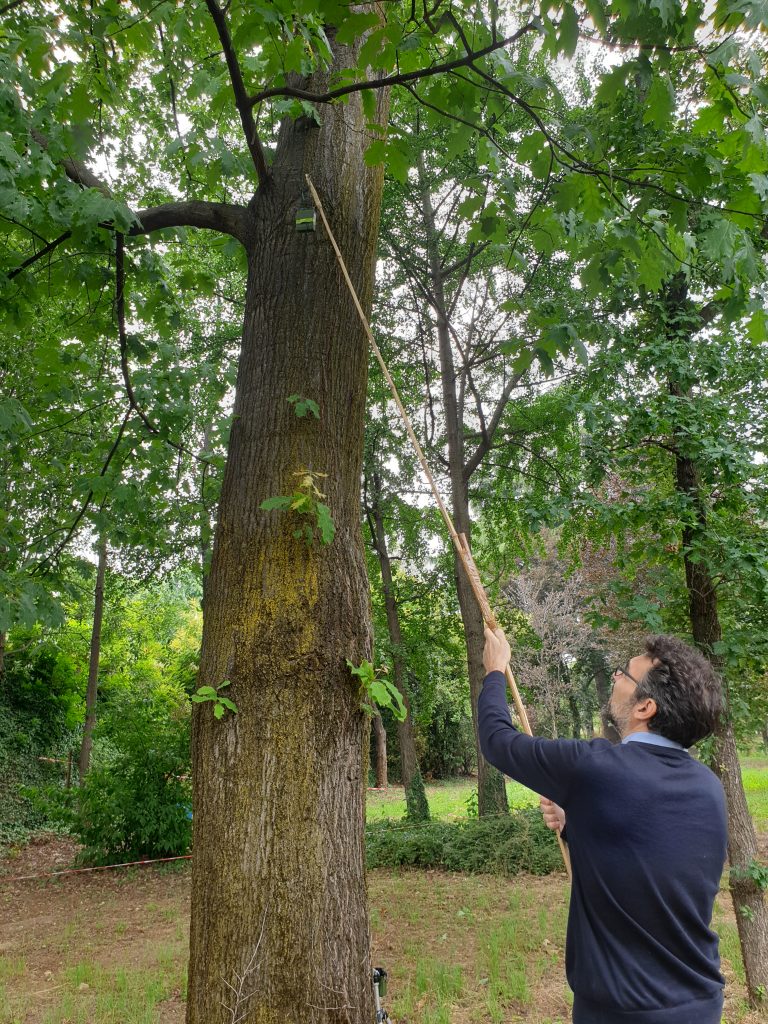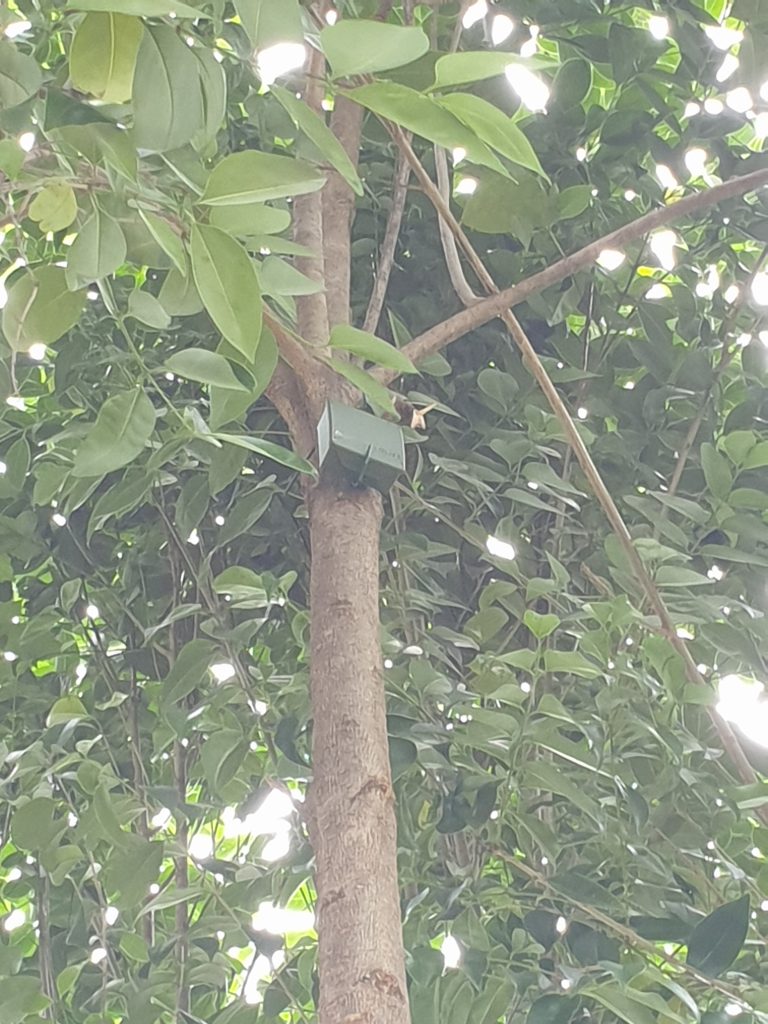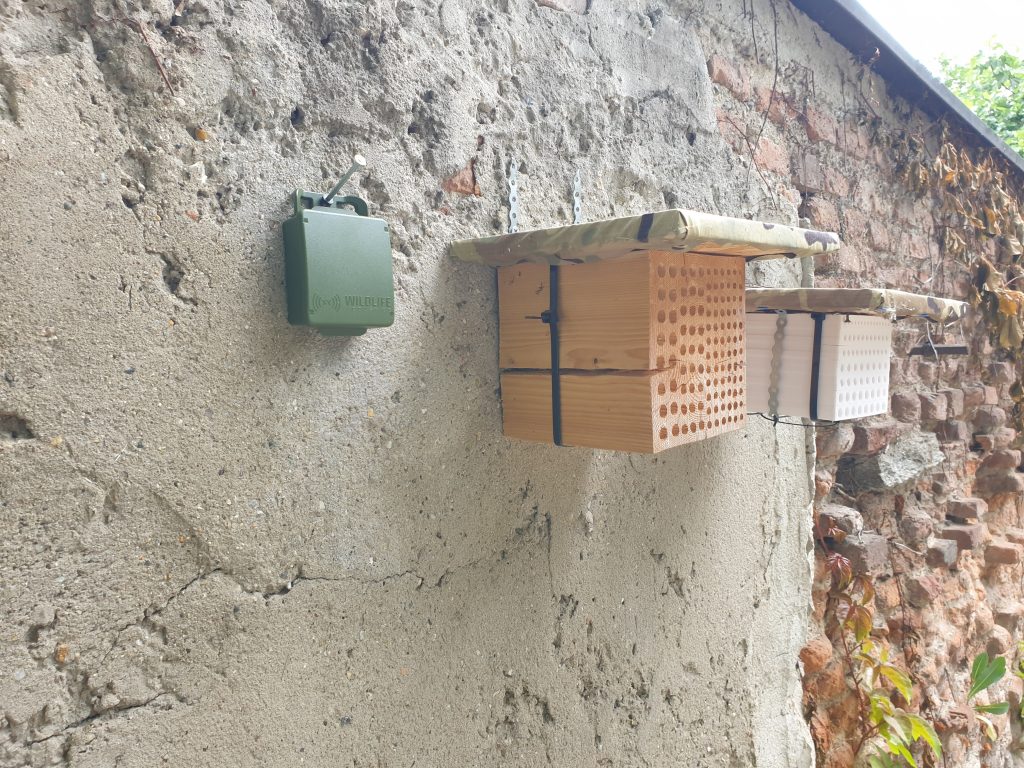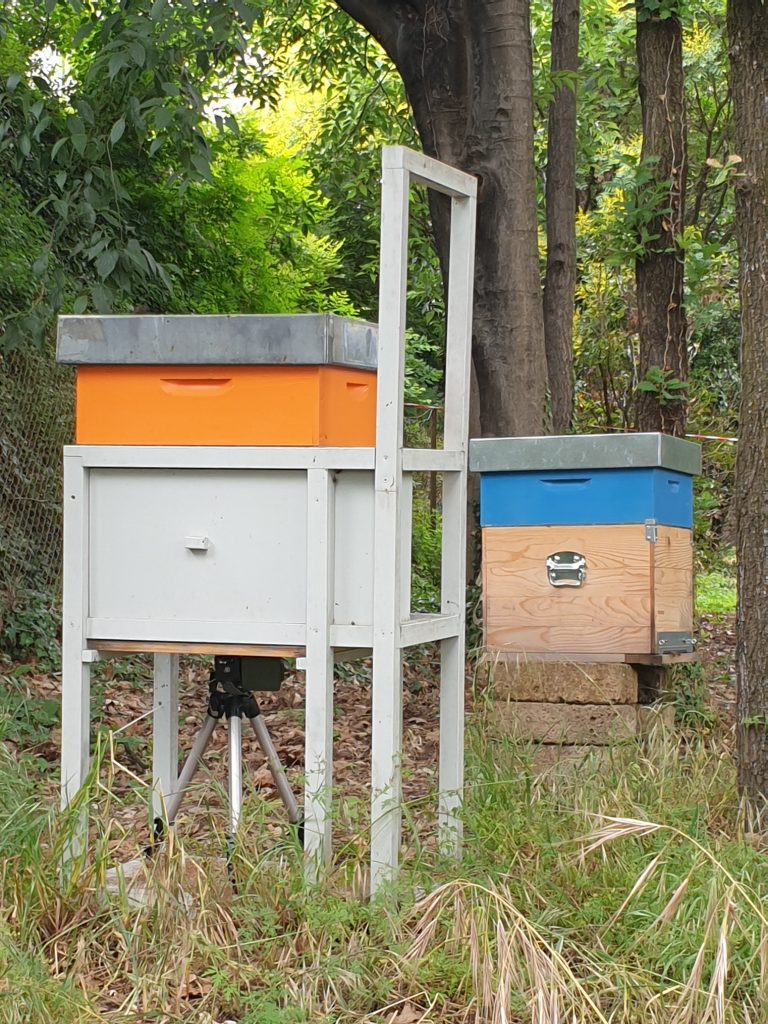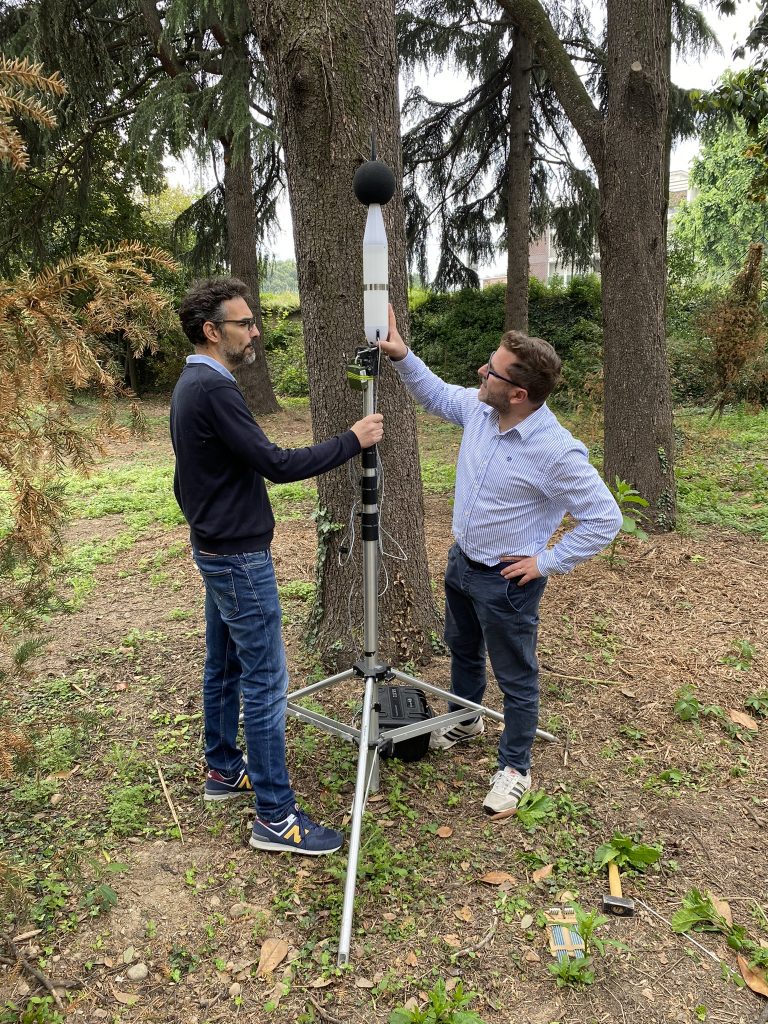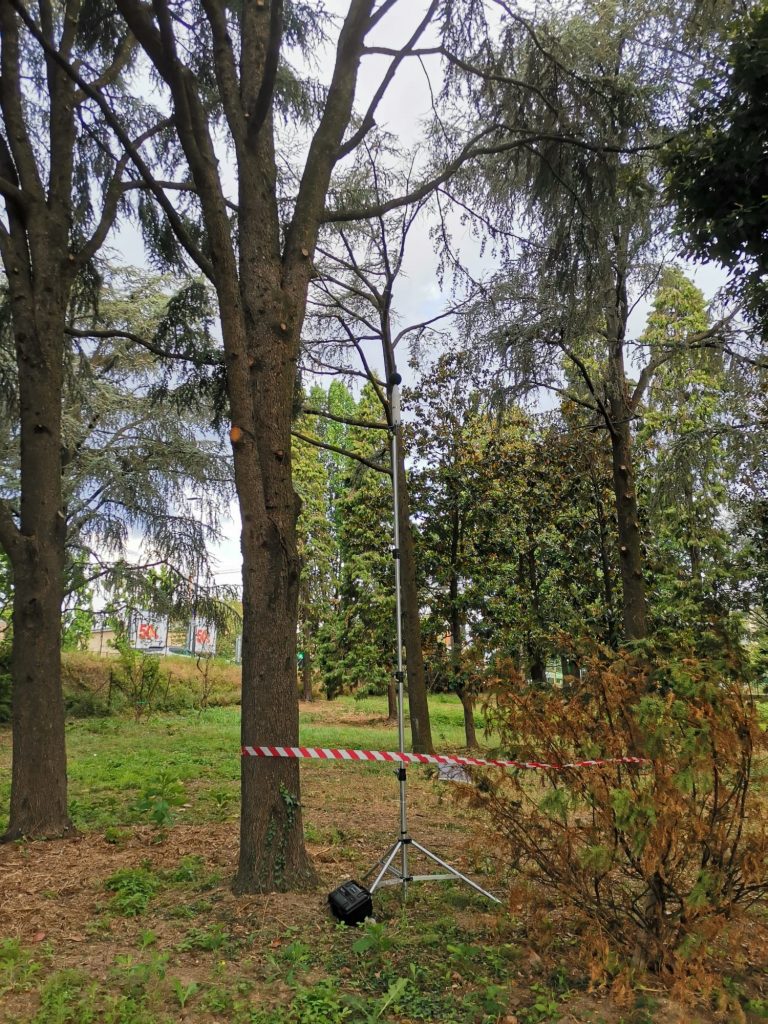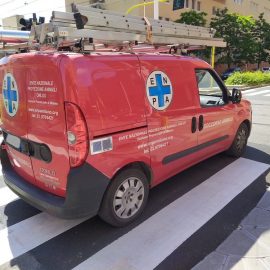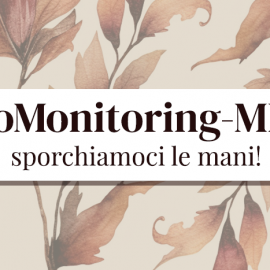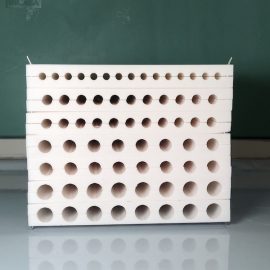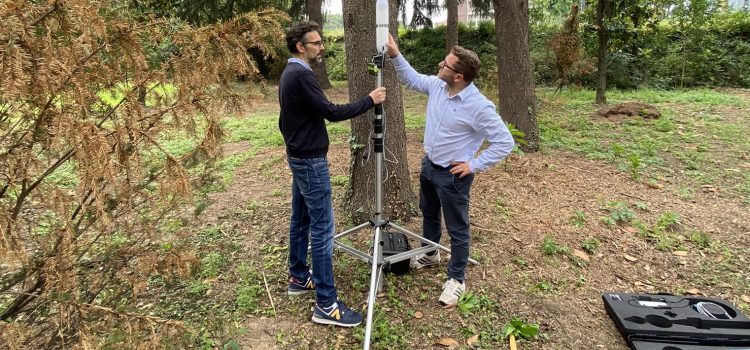
Soundscape and noise pollution monitoring in the Vivaio Bicocca
The Vivaio Bicocca is a green area located in a highly anthropized urban context in Milan with many noise sources (roads, railways, manufacturing activities). For these reasons, it is suitable for noise pollution and soundscape research activities to be done through long and short monitoring campaigns.
The term “soundscape” expresses the relationship between the landscape and the sounds herein generated. These sounds can be classified into three classes: those produced by people and their activities (anthrophony), those generated by living beings (biophony) and those produced by natural phenomena (geophony).
Long exposure to noise pollution affects human health and it is considered a major problem in Europe. Regarding the Vivaio, noise pollution may interfere with the educational activities which take place in it. Furthermore, anthropic noise has a significant impact on natural habitats: it reduces species (terrestrial and marine) abundance and diversity, alters intra and interspecific relationships and causes health deterioration of individuals.
Field monitoring activity was carried out in May 2022 by the Acoustic research group of the Department of Earth and Environmental Sciences (directed by Professor Giovanni Zambon with the support of dr. Alessandro Bisceglie, dr. Andrea Potenza, dr. Roberto Benocci and dr. Fabio Angelini).
Different instruments were used in the Vivaio:
- one noise monitoring station;
- three recorders to detect avian vocalizations;
- two recorders to detect bees’ activity (one located near a hive of domestic bees and one close to nesting boxes for wild bees).
Professor Andrea Galimberti (zoologist at the Department of Biotechnology and Biosciences) supported soundscape monitoring with an ornithological recognition campaign at listening stations in the Vivaio. The following species were identified (sorted by abundance of vocalizations): eurasian blackcap, hooded crow, common chaffinch, long-tailed tit, common blackbird, common wood pigeon, european serin, common starling, common swift, great tit, common redstart.
With the exception of the common redstart and common swift (which are trans-Saharan migratory birds that stay in the areas close to the Vivaio just for nesting), the species detected are resident, thus they stay in the Vivaio for their entire life.
As already mentioned, noise pollution can be a source of stress for the fauna since as demonstrated in numerous studies it can modify their behaviour. As an example, in an urban environment characterized by significant levels of noise pollution, these and other species must raise the “volume” of their vocalizations consuming more energies compared to other populations living in less polluted areas.
Thus, the monitoring campaign will allow us to produce noise maps and consequently propose mitigation plans. In addition, soundscape analysis will lead to the calculation of different eco-acoustic indices correlated to the presence of biophonies and anthropophonies. These indices will permit to produce spatial maps identifying the areas of the Vivaio with the highest avian biodiversity.
In view of the results of these two monitoring activities, it will be evaluated the installation of acoustic screens (sound-insulating barriers or sound-absorbing plant barriers) capable of mitigating noise coming from outside the Vivaio.

